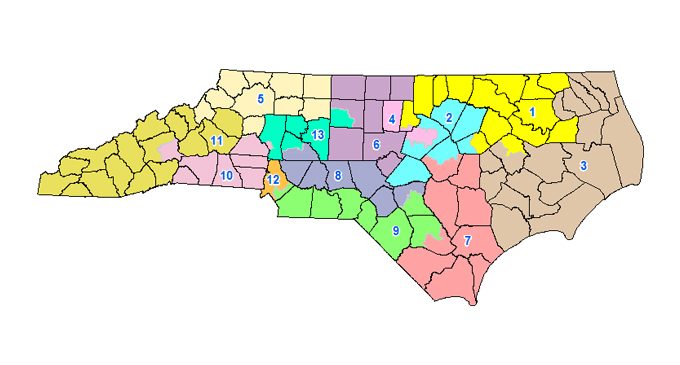Dems bracing for new GOP redistricting maps

According to reliable legislative sources, after the Special Session reconvenes Friday, preliminary redistricting maps may be completed then (or by Monday), with public hearings tentatively scheduled to take place either Tuesday, Aug. 22 or Wednesday, Aug. 23 in six to eight locations across the state. Depending on the location, various state lawmakers are expected to be present at those hearings.
Then on Thursday, Aug. 24th and Friday, Aug. 25th, there will be committee votes on the new maps. Floor votes the following week (of Aug. 28) in both the state House and Senate are scheduled, with each voting to approve their respective redistricting maps, and then ratifying the other chamber’s version. That is the tentative schedule, with all relevant materials submitted to the three-judge federal court panel that ordered them submitted by Sept. 1st for judicial review.
Given the criteria adopted by the Republican-led Joint Redistricting Committee on Aug. 10, the new voting districts – to be drawn to remedy the 28 of 170 districts that were determined by the federal court to be illegal racial gerrymanders in the 2011 redistricting plan – will use the population figures from the 2010 U.S. Census, employing the data from each legislative district to make them as equal numerically as possible, within a plus or minus 5-percent deviation, as required by federal law.
The legislative districts will also comply with county boundaries as much as possible, maintaining county groupings and not crossing county lines unless permitted by previous case law.
Using 2010 Census data and respecting county lines was all Republicans and Democrats could agree on during the four-and a-half-hour session. The other seven voting map criteria were adopted amid fierce partisan debate, including criteria allowing for use of previous election data, split precincts and protection of sitting incumbents who were ironically elected from illegal districts in the first place. Democrats argued that ultimately, their views and concerns about the process weren’t being fairly considered at all.
What seems evident is that there may also be “double-bunking,” where some districts are redrawn in a manner forcing two current incumbents in separate districts to suddenly be redrawn into the same district, having to compete against each other for re-election. Democrats fear Republican leaders may use this redistricting tactic to punish the minority party.
Of particular concern was the Republican requirement that race not be used as a factor in redrawing the new maps at all. This was a complete about-face from how the GOP “stacked -and-packed” black Democratic voters into as few legislative districts as possible per the 2011 maps for the expressed purpose, according to the three-judge federal
panel with concurrence from the US Supreme Court, to insure that they had as little influence as possible on surrounding legislative races between white Democrats and Republicans.
The court ruled that race was the predominant, illegal reason why those 28 districts were drawn. But now, Republicans were swinging the other way, saying that race, which legally can be a contributing factor in drawing maps, not the main factor, would
not be used at all. For many current black elected lawmakers, all Democrat, that meant the percentage of black constituents in their respective districts could be reduced. There was also concern about the 1965 Voting Rights Act being violated, thus forcing the federal court to ultimately throw out the new maps, and further delaying the redistricting remedying process.
“We live in the South,” said state Sen. Paul Lowe Jr. (D-Forsyth). “When, in the South, has race not been a factor?”
“You’re still short-changing a group of people when you don’t consider us,” lamented veteran lawmaker Rep. H.M. “Mickey” Michaux, Jr. “The districts were declared unconstitutional because of race. If you don’t use race to correct it, how are you going to show the court that they’re not still unconstitutional?”
Rep. David Lewis (R-Harnett), chair of the House Select Committee on Redistricting who oversaw the 2011 redistricting maps, ignored Michaux’s reasoning, replying that he would not respond.
Legislative sources say leaders in the state’s African-American community should pay very close attention at how the new maps are drawn, given that race has now been totally divorced from the proceedings.
At the end of the long session, Democrats found little comfort in the outcome. They found even less comfort in knowing that the same Republican mapmaker responsible for drawing the 2011 voting districts found to be illegal because of racial gerrymandering, Thomas Hofeller, has been rehired at $50,000 to redraw his original work.
“So far, the GOP strategy has been to delay as long as possible to protect their veto proof majority,” wrote political analyst Thomas Mills in his online PoliticsNC column recently. “Maybe drawing maps under criteria that might not pass muster is part of that strategy. Either they get maps that will heavily favor Republicans again or they can draw out the suit over the next election cycle, keeping the current districts intact. Seems that’s a bad bet, but who knows?”











